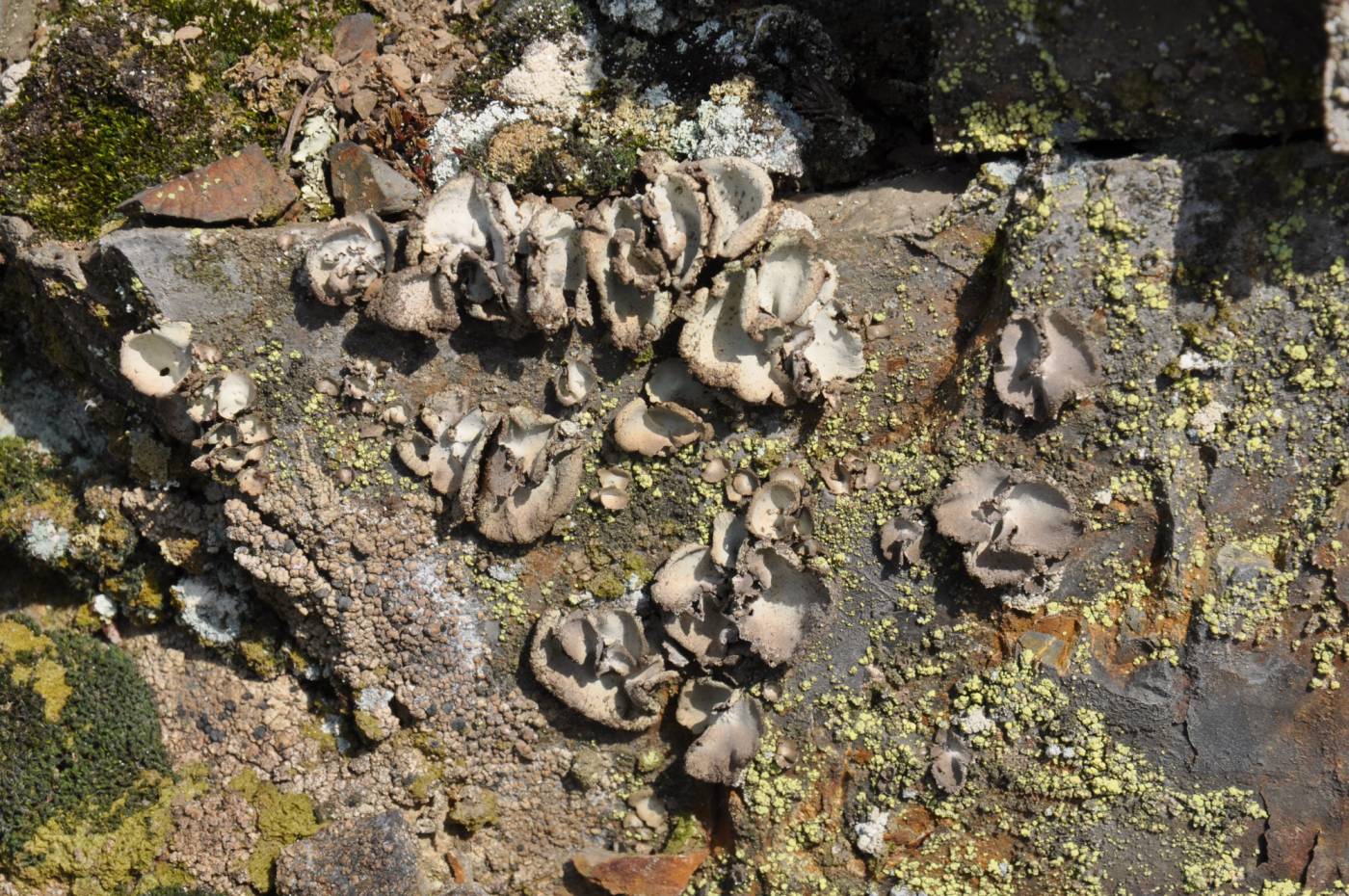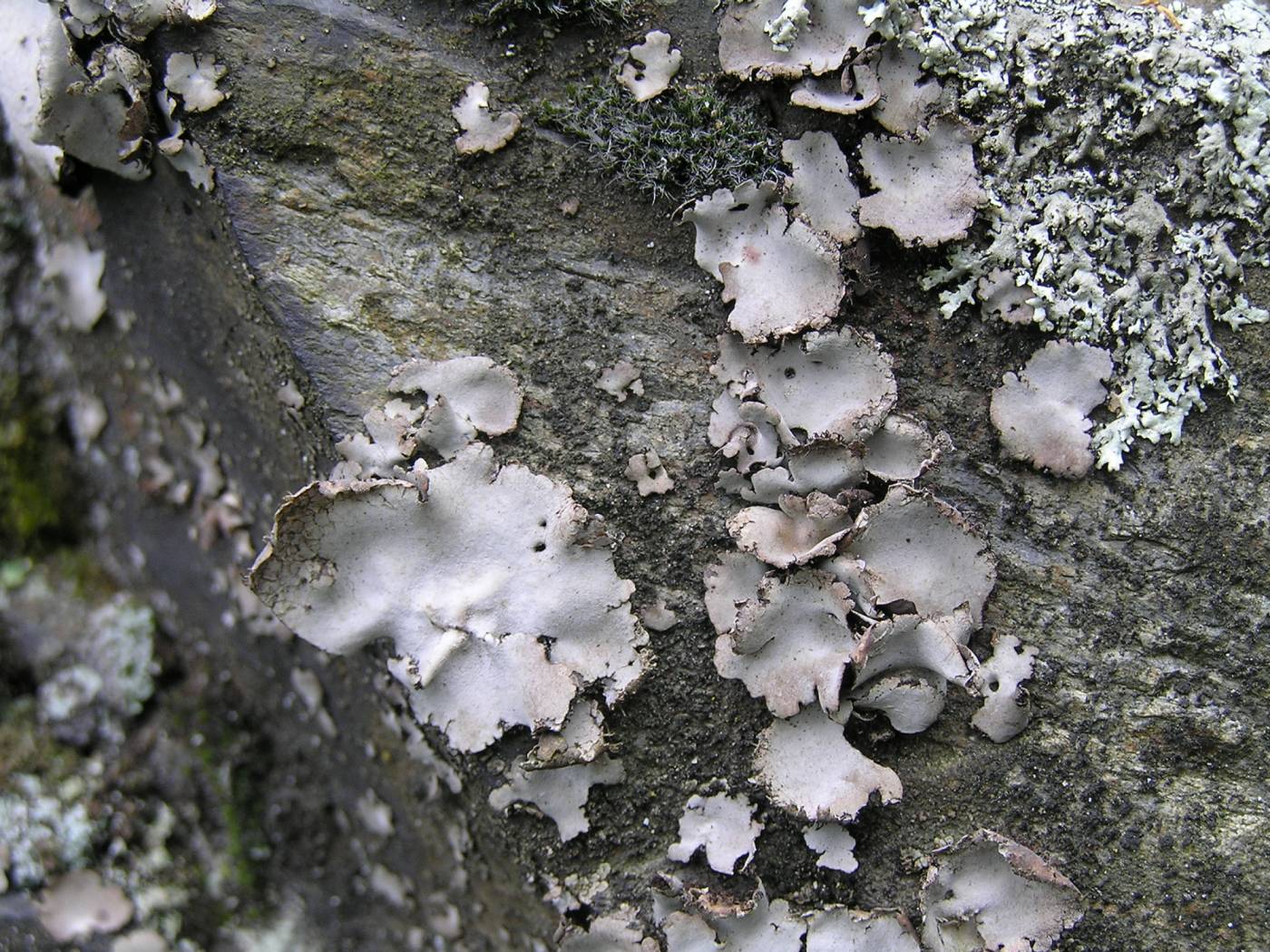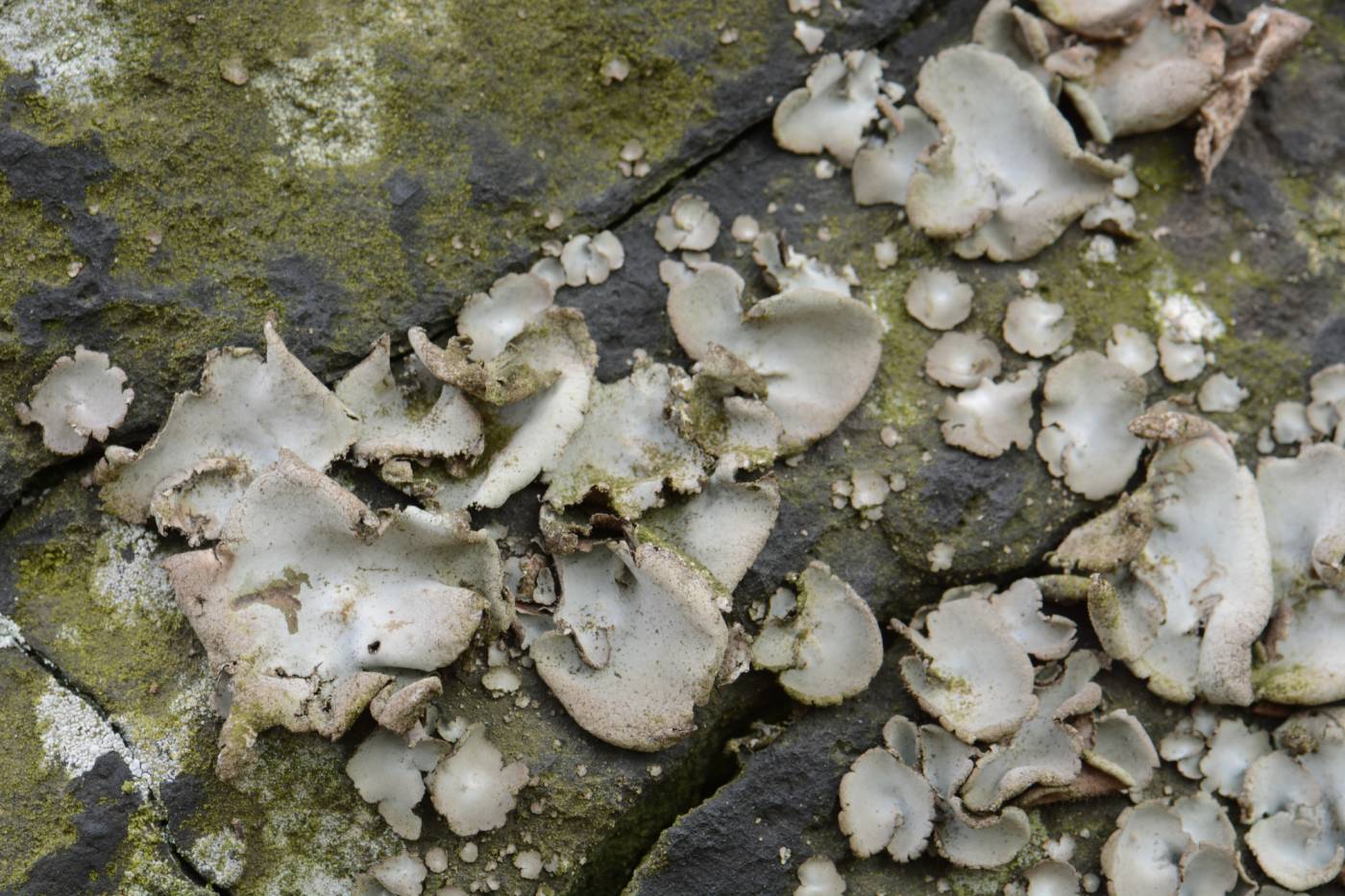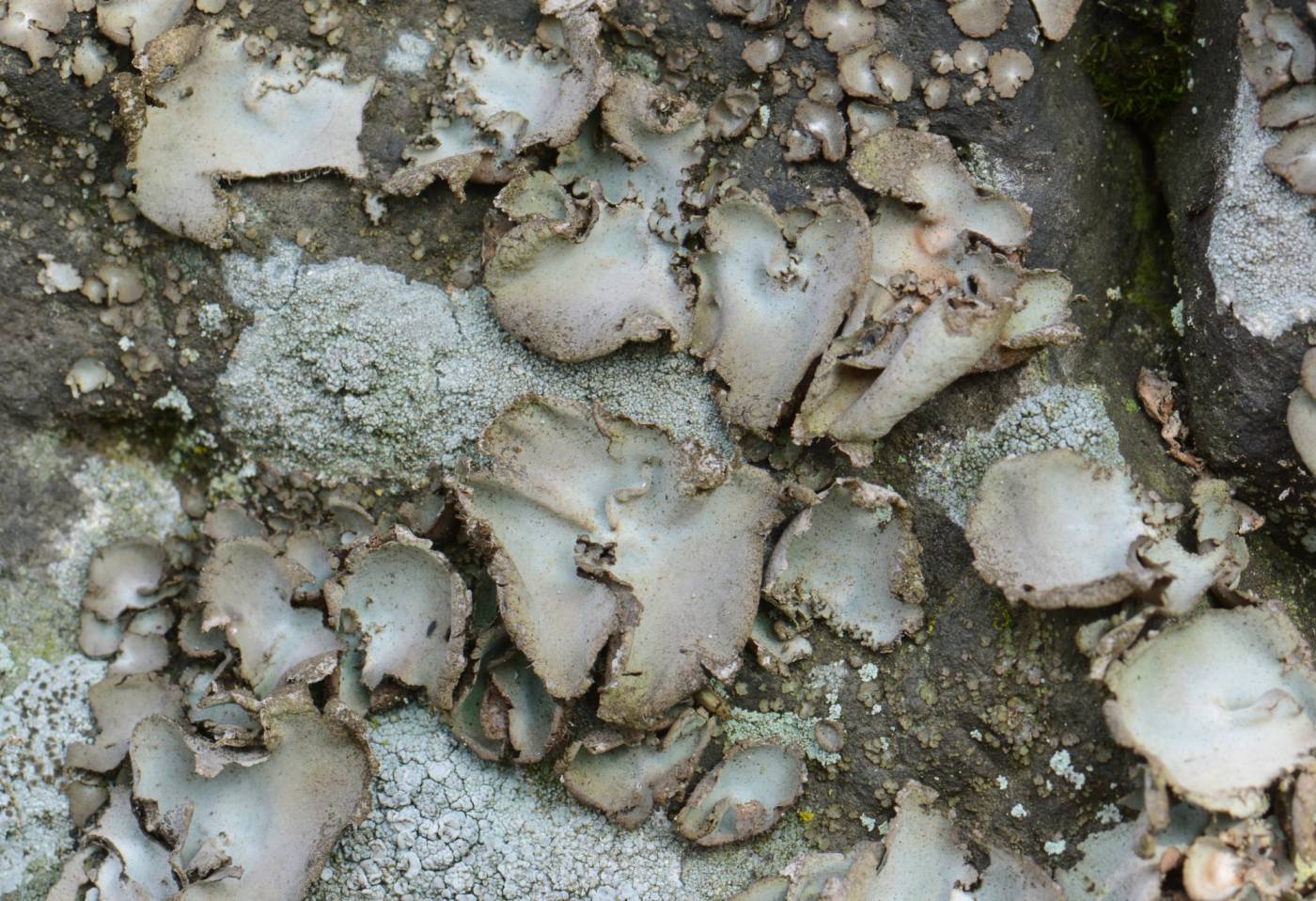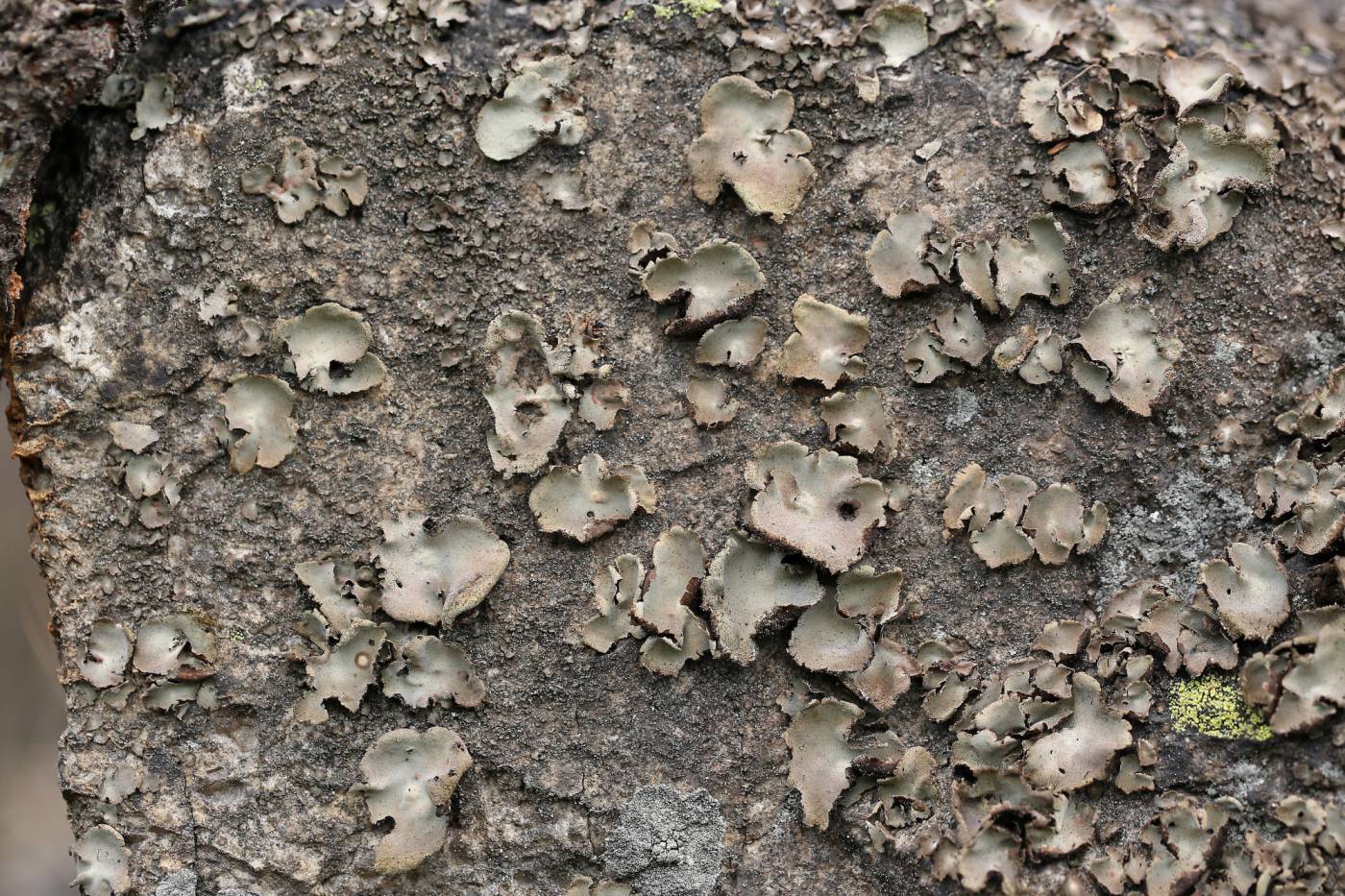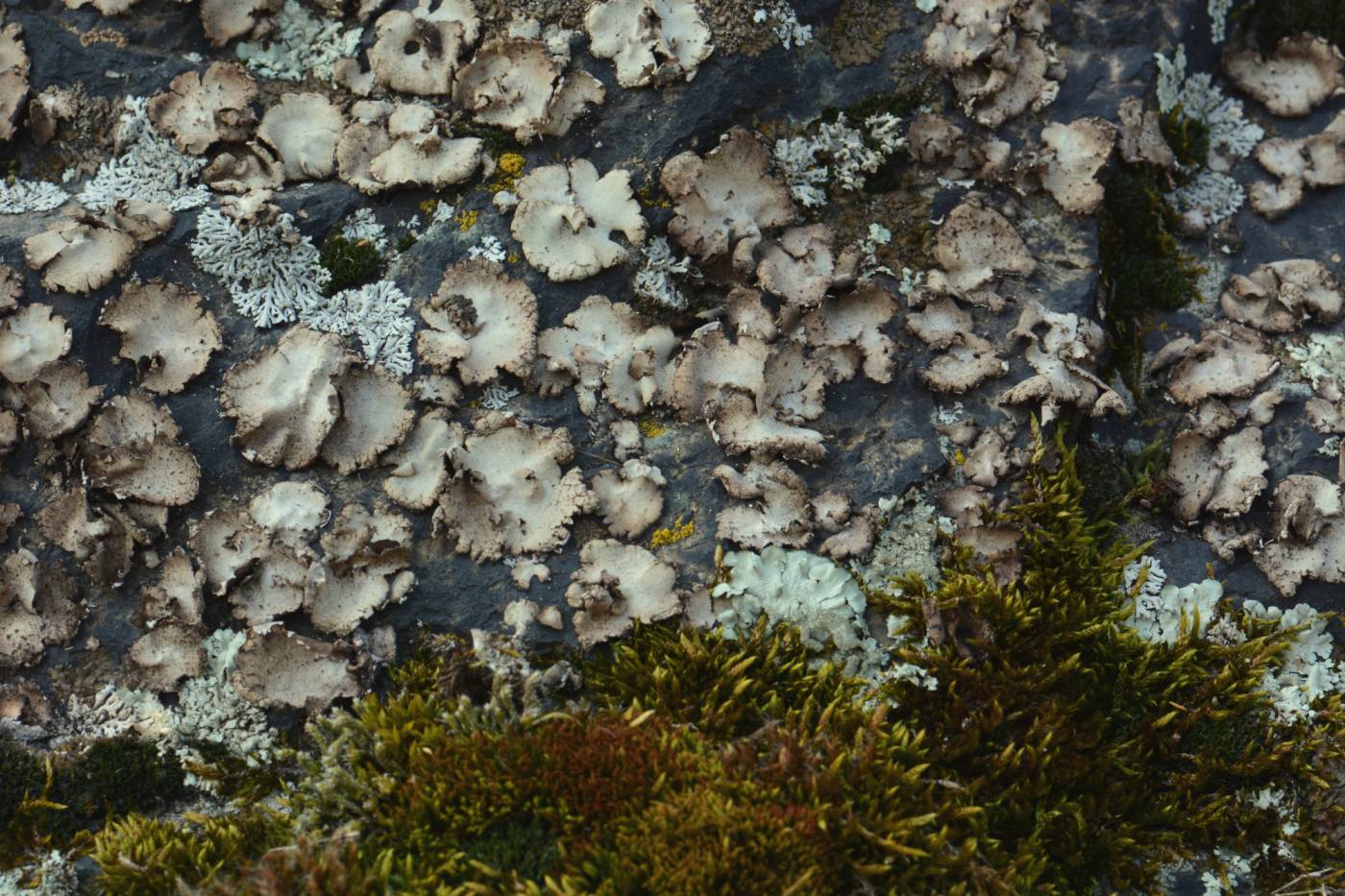Characterized by the formation of secondary soredia, i.e., parasoredia, on the thallus surface and by the pale lower surface with numerous rhizines. Typically, on horizontal surfaces of both acidic and basic silicates, as well as volcanics. It prefers well-lit to partly shaded natural rock outcrops. Exceptionally, also epiphytic when in the immediate vicinity of rocks. One of the most abundant Umbilicaria species in Europe. Generally considered a montane species, grows in the top part of the Sněžka Mountain. However, majority of its localities in the Czech Republic are at middle or lower elevations, typically in river valleys or volcanic hills.
Two similar species might possibly occur in the Czech Republic. More oceanic U. grisea had been recorded in the Czech Republic, but its identification was questioned (Lisická 1980). Similar U. freyi forms schizidia and can be even found in the southern Alps.
Literature: Lisická E. (1980): Flechtenfamilie Umbilicariaceae Fée in der Tschechoslowakei. – Biologické Práce SAV 26/4: 1–152. Codogno M., Poelt J. & Puntillo D. (1989): Umbilicaria freyi spec. nova und der Formenkreis von Umbilicaria hirsuta in Europa (Lichenes, Umbilicariaceae). – Plant Systematics and Evolution 165: 55–69.
taxonomic classification:Ascomycota → Lecanoromycetes → Umbilicariales → Umbilicariaceae → Umbilicaria
Red List (Liška & Palice 2010):LC – least concern
Occurrence in the Czech Republic
All records: 278, confirmed 160. One click on a selected square displays particular record(s), including their source(s).
